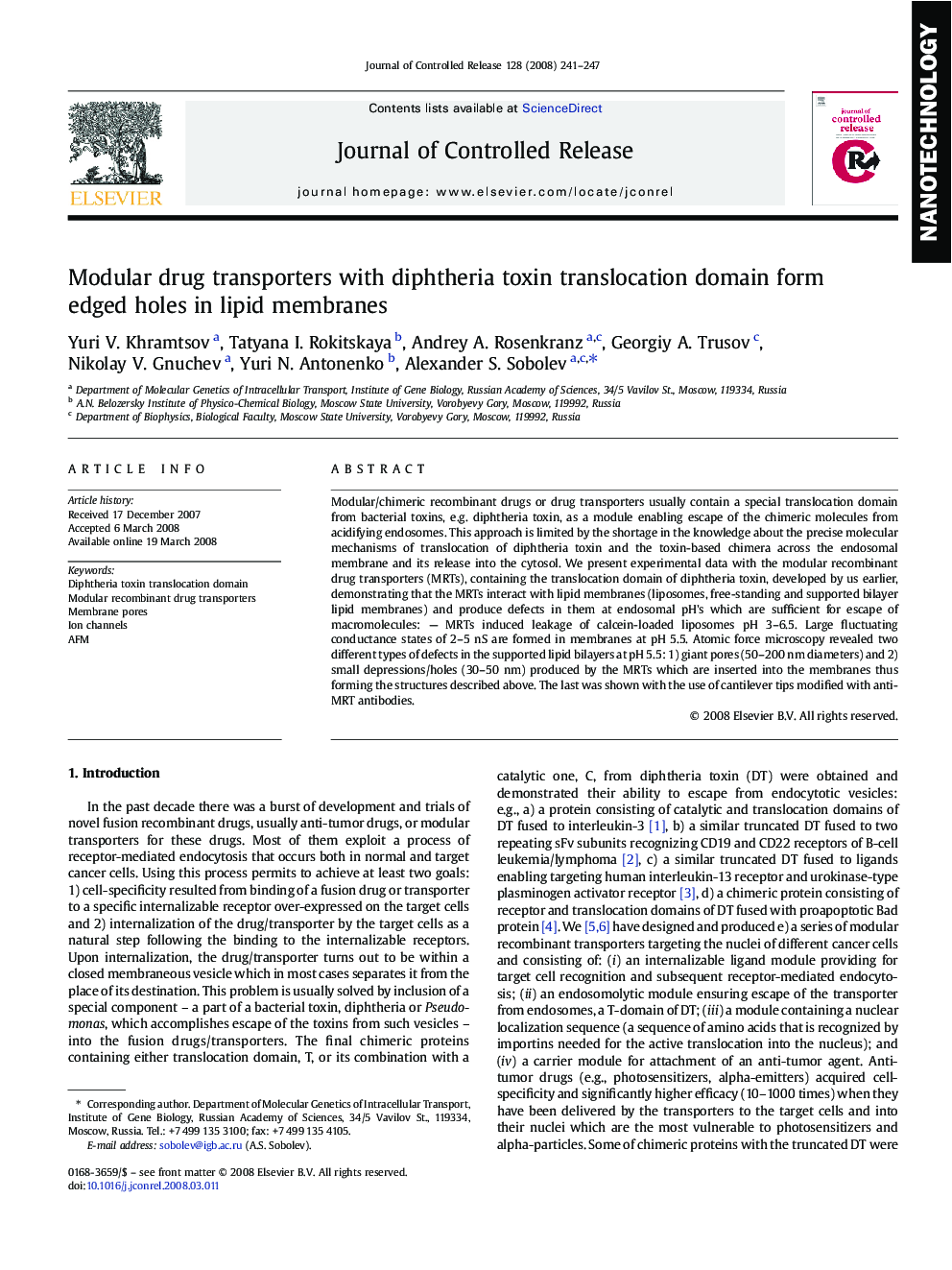| Article ID | Journal | Published Year | Pages | File Type |
|---|---|---|---|---|
| 1426945 | Journal of Controlled Release | 2008 | 7 Pages |
Modular/chimeric recombinant drugs or drug transporters usually contain a special translocation domain from bacterial toxins, e.g. diphtheria toxin, as a module enabling escape of the chimeric molecules from acidifying endosomes. This approach is limited by the shortage in the knowledge about the precise molecular mechanisms of translocation of diphtheria toxin and the toxin-based chimera across the endosomal membrane and its release into the cytosol. We present experimental data with the modular recombinant drug transporters (MRTs), containing the translocation domain of diphtheria toxin, developed by us earlier, demonstrating that the MRTs interact with lipid membranes (liposomes, free-standing and supported bilayer lipid membranes) and produce defects in them at endosomal pH's which are sufficient for escape of macromolecules: — MRTs induced leakage of calcein-loaded liposomes pH 3–6.5. Large fluctuating conductance states of 2–5 nS are formed in membranes at pH 5.5. Atomic force microscopy revealed two different types of defects in the supported lipid bilayers at pH 5.5: 1) giant pores (50–200 nm diameters) and 2) small depressions/holes (30–50 nm) produced by the MRTs which are inserted into the membranes thus forming the structures described above. The last was shown with the use of cantilever tips modified with anti-MRT antibodies.
